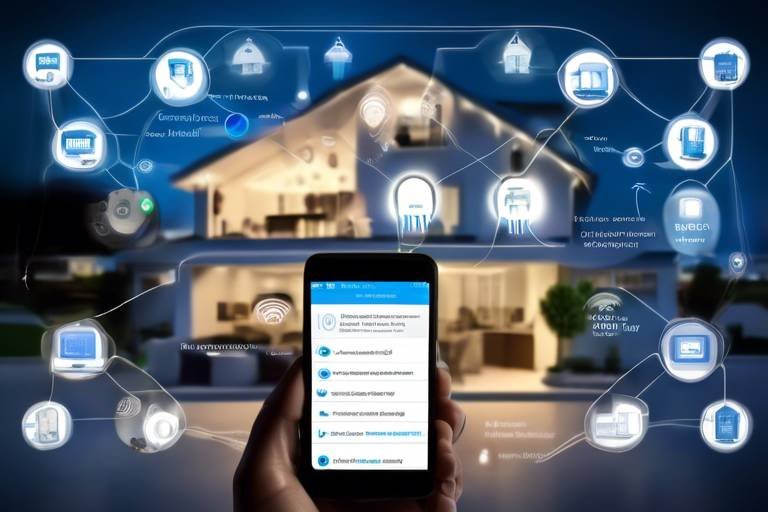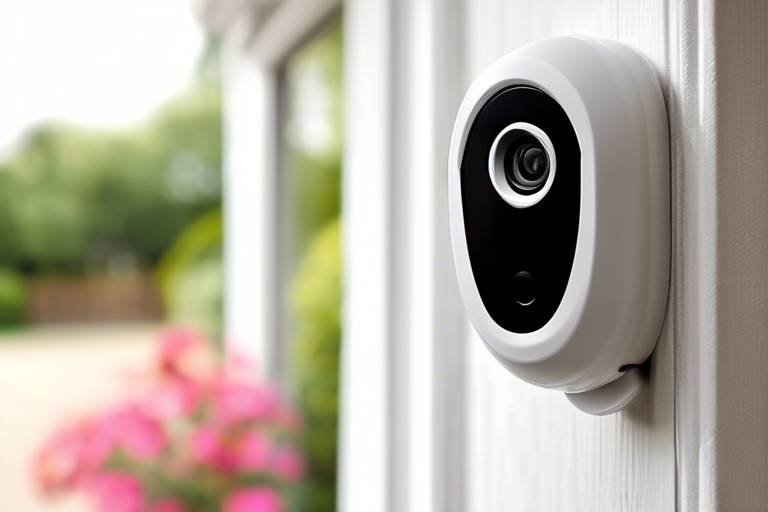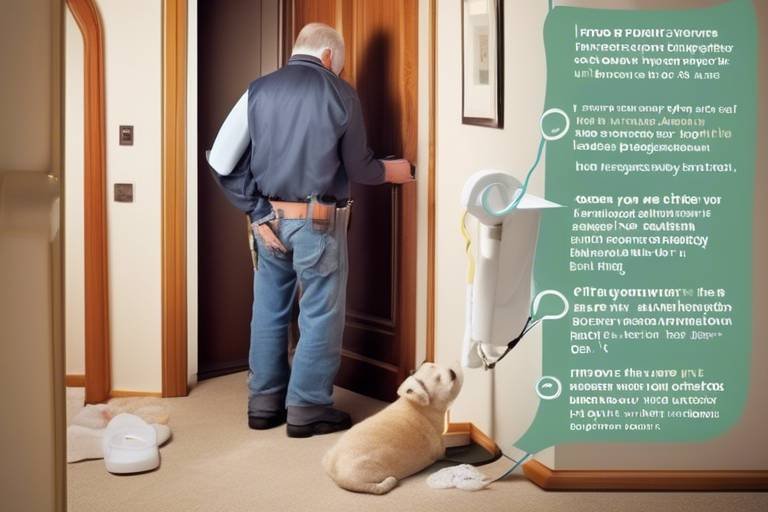Essential Tools for Home Safety
In today's world, ensuring the safety of our homes and loved ones is more critical than ever. With the rising concerns about fire hazards, intruders, and environmental dangers, having the right tools at your disposal can make all the difference. This article explores crucial tools that enhance safety in your home, ensuring peace of mind and protection for your family. From smoke detectors to advanced security systems, we’ll dive deep into how to implement these tools effectively and safeguard your sanctuary.
Smoke detectors are vital for early fire detection. Imagine waking up in the middle of the night to the smell of smoke; a smoke detector can be your first line of defense. These devices are designed to alert you at the first sign of smoke, giving you precious moments to escape. It’s essential to understand the different types of smoke detectors available, installation best practices, and maintenance tips to ensure they function properly. Regularly testing your smoke detectors can be as simple as pressing a button, but it could save your life.
Carbon monoxide alarms are essential for detecting this odorless gas, which can be deadly in high concentrations. Unlike smoke, you can't see or smell carbon monoxide, making it a silent threat in your home. Understanding the importance of these alarms, their placement guidelines, and how to test and maintain them for optimal safety is crucial. Installing a carbon monoxide alarm near sleeping areas ensures that you’ll be alerted if the gas levels become dangerous while you’re asleep.
Explore the various types of carbon monoxide alarms available, including battery-operated, plug-in, and hardwired models. Each type has its pros and cons, and choosing the right one for your home can depend on several factors, such as your living situation and budget. For instance, battery-operated models are great for renters or those who want a quick installation, while hardwired models may offer more reliability for homeowners.
Proper installation is critical for carbon monoxide alarms. Discover the best locations for placement and guidelines to ensure maximum effectiveness in detecting gas leaks. Ideally, you should install alarms on every level of your home, especially near sleeping areas. Additionally, avoid placing them near windows or vents, as drafts can interfere with their ability to detect gas.
Regular maintenance and testing are crucial for carbon monoxide alarms. Learn how often to check them and what steps to take for upkeep. It’s recommended to test your alarms monthly by pressing the test button and replacing the batteries at least once a year. Also, consider replacing your carbon monoxide alarm every 5 to 7 years to ensure it operates effectively.
Different types of smoke detectors offer varying features. Compare ionization, photoelectric, and dual-sensor detectors to determine which is best suited for your home. Ionization detectors are more responsive to flaming fires, while photoelectric detectors excel at sensing smoldering fires. Dual-sensor detectors combine both technologies, providing comprehensive coverage. Choosing the right type can significantly impact your home’s safety.
Home security systems provide comprehensive protection against intruders. With a variety of options available, it’s essential to understand the components, benefits, and considerations when selecting a system that fits your needs. A well-designed security system can deter burglars, alert you to intrusions, and even provide peace of mind when you’re away from home.
A typical home security system includes alarms, cameras, and sensors. Each component plays a crucial role in creating a secure environment. Alarms alert you and your neighbors in case of a breach, while cameras provide visual evidence and can deter potential intruders. Sensors can detect motion or unauthorized entry, ensuring that your home remains secure even when you’re not there.
With numerous options available, selecting the right security system can be overwhelming. Learn how to assess your home’s unique needs and budget for the best choice. Consider factors such as the size of your home, the number of entry points, and whether you prefer a monitored or unmonitored system. It’s like finding the perfect pair of shoes—comfort and fit matter the most!
- How often should I test my smoke detectors? It’s recommended to test them monthly.
- Where should I place carbon monoxide alarms? Install them on every level of your home, especially near sleeping areas.
- What is the lifespan of a smoke detector? Smoke detectors should be replaced every 10 years.
- Are home security systems worth the investment? Yes, they can significantly enhance your home’s safety and provide peace of mind.

Smoke Detectors
This article explores crucial tools that enhance safety in your home, ensuring peace of mind and protection for your family. Discover how to implement these tools effectively.
Smoke detectors are vital for early fire detection and can be the difference between life and death in the event of a fire. Imagine waking up in the middle of the night to the sound of a smoke detector blaring, alerting you to a potential danger that could have easily gone unnoticed. These devices are designed to sense smoke and provide an early warning, giving you precious time to escape. But not all smoke detectors are created equal, and understanding the different types, installation best practices, and maintenance tips can significantly enhance their effectiveness.
There are primarily three types of smoke detectors: ionization detectors, photoelectric detectors, and dual-sensor detectors. Ionization detectors are particularly sensitive to fast-flaming fires, while photoelectric detectors excel at detecting smoldering fires. Dual-sensor detectors combine the strengths of both technologies, providing comprehensive coverage. When choosing a smoke detector, consider your home layout and the types of fires most likely to occur in your environment.
Installation is crucial. For optimal performance, smoke detectors should be placed:
- On every level of your home, including the basement.
- Inside each bedroom and outside each sleeping area.
- At least 10 feet away from cooking appliances to minimize false alarms.
Also, remember to install them on the ceiling or high on the wall, as smoke rises. Regular maintenance is just as important as installation. Test your smoke detectors at least once a month by pressing the test button. Replace the batteries at least once a year, and if your smoke detector is over 10 years old, it’s time to replace the entire unit. Keeping your smoke detectors in top shape is like having a reliable friend who always looks out for you, ready to warn you when danger approaches.
In summary, smoke detectors are an indispensable part of any home safety plan. By understanding the different types, ensuring proper installation, and maintaining them regularly, you can significantly increase your home’s safety and protect your loved ones from the devastating effects of fire.
Carbon monoxide alarms are essential for detecting this odorless gas. Understand their importance, placement guidelines, and how to test and maintain them for optimal safety.
Explore the various types of carbon monoxide alarms available, including battery-operated, plug-in, and hardwired models, and how to choose the right one for your home.
Proper installation is critical for carbon monoxide alarms. Discover the best locations for placement and guidelines to ensure maximum effectiveness in detecting gas leaks.
Regular maintenance and testing are crucial for carbon monoxide alarms. Learn how often to check them and what steps to take for upkeep.
Different types of smoke detectors offer varying features. Compare ionization, photoelectric, and dual-sensor detectors to determine which is best suited for your home.
Home security systems provide comprehensive protection against intruders. Explore the components, benefits, and considerations when selecting a system that fits your needs.
A typical home security system includes alarms, cameras, and sensors. Understand the role of each component in creating a secure environment.
With numerous options available, selecting the right security system can be overwhelming. Learn how to assess your home’s unique needs and budget for the best choice.
Q: How often should I test my smoke detectors?
A: It's recommended to test your smoke detectors at least once a month to ensure they are functioning properly.
Q: Where should I place smoke detectors in my home?
A: Install smoke detectors on every level of your home, inside each bedroom, and outside each sleeping area for maximum safety.
Q: How long do smoke detectors last?
A: Most smoke detectors need to be replaced every 10 years. Check the manufacturer's instructions for specific guidelines.
Q: What should I do if my smoke detector goes off?
A: If your smoke detector goes off, treat it as a fire alarm. Evacuate the premises immediately and call emergency services.

Carbon Monoxide Alarms
are essential devices that play a critical role in ensuring your family's safety. This odorless, colorless gas is often referred to as the "silent killer" because it can accumulate in your home without any immediate warning. Unlike smoke, which you can see and smell, carbon monoxide is undetectable without specialized equipment. That's where these alarms come in—they serve as your first line of defense against this invisible threat.
Understanding the importance of carbon monoxide alarms can save lives. According to the Centers for Disease Control and Prevention (CDC), more than 400 Americans die from unintentional CO poisoning each year. Furthermore, thousands more are treated for CO exposure. With such alarming statistics, it becomes evident that having a carbon monoxide alarm is not just a good idea—it's a necessity.
When it comes to placement, it's crucial to install these alarms in the right locations. Ideally, you should have a carbon monoxide alarm on every level of your home, especially near sleeping areas. This way, if CO levels rise while you're asleep, the alarm will wake you up, giving you a chance to escape. Additionally, it's advisable to keep the alarms at least 15 feet away from fuel-burning appliances to minimize false alarms.
Now, let’s talk about how to test and maintain these life-saving devices. Regular testing is essential to ensure that your alarms are functioning correctly. Most models come with a test button—press it once a month to check if the alarm is working. It's also important to replace the batteries at least once a year, even if the alarm hasn't signaled a low battery. Remember, a dead battery is as good as having no alarm at all!
There are several types of carbon monoxide alarms available on the market, each with its unique features. The three main types include:
- Battery-operated: These alarms are easy to install and don't require any wiring. However, you must remember to replace the batteries regularly.
- Plug-in: These models can be plugged into any standard outlet, but they won't work during a power outage unless they have a battery backup.
- Hardwired: These alarms are connected directly to your home's electrical system and usually come with a battery backup. They are often more reliable but require professional installation.
Proper installation is critical for maximizing the effectiveness of your carbon monoxide alarms. Here are some key points to consider:
- Install alarms in hallways and near sleeping areas.
- Avoid placing them too close to fuel-burning appliances.
- Follow the manufacturer's instructions for optimal placement.
Regular maintenance is vital for the longevity and reliability of your carbon monoxide alarms. Here’s what you need to do:
- Test the alarms monthly using the test button.
- Replace batteries annually or as needed.
- Replace the entire unit every 5 to 7 years, depending on the manufacturer's recommendations.
In conclusion, carbon monoxide alarms are a crucial component of a safe home environment. By understanding their importance, ensuring proper installation, and committing to regular maintenance, you can significantly reduce the risk of CO poisoning in your home. Remember, it’s better to be safe than sorry—invest in these alarms today and protect your loved ones from this silent threat!
Q1: How often should I replace my carbon monoxide alarm?
A: Most carbon monoxide alarms should be replaced every 5 to 7 years, but always check the manufacturer's guidelines.
Q2: Can I install a carbon monoxide alarm myself?
A: Yes, many models are designed for easy DIY installation, especially battery-operated and plug-in types. However, hardwired models may require professional installation.
Q3: What should I do if my carbon monoxide alarm goes off?
A: Immediately evacuate your home and call emergency services. Do not re-enter until it is declared safe.
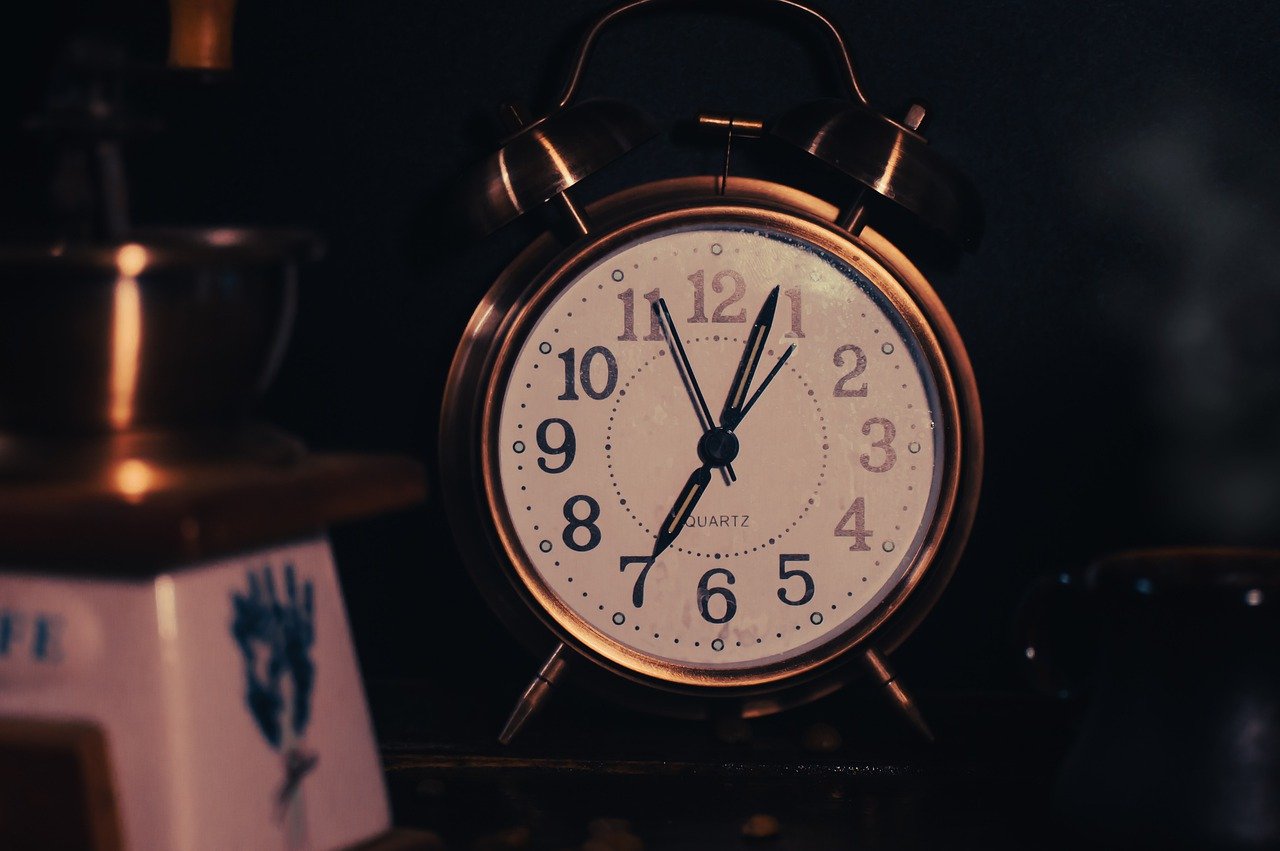
Types of Carbon Monoxide Alarms
When it comes to protecting your home and family from the dangers of carbon monoxide (CO), understanding the different types of carbon monoxide alarms available is crucial. These devices can literally be lifesavers, alerting you to the presence of this odorless and colorless gas that can cause serious health issues or even be fatal. Let's dive into the main types of carbon monoxide alarms, helping you make an informed choice for your home.
There are three primary types of carbon monoxide alarms: battery-operated, plug-in, and hardwired. Each type has its unique features and benefits, catering to different needs and preferences. For instance, battery-operated models are fantastic for those who want a simple, portable solution. They can be placed anywhere in your home without the need for electrical outlets, making them incredibly versatile.
On the other hand, plug-in models are ideal for households that prefer a device that can be easily moved from room to room but still requires a power source. These alarms often come equipped with a battery backup, ensuring they remain functional even during power outages. Finally, hardwired alarms are permanently installed and connected directly to your home’s electrical system. This type is often favored for its reliability and the peace of mind it provides, as it eliminates concerns about changing batteries.
To help you visualize these options better, here’s a quick comparison:
| Type | Power Source | Portability | Maintenance |
|---|---|---|---|
| Battery-Operated | Batteries | Highly portable | Regular battery replacement |
| Plug-In | Electrical outlet + battery backup | Moderately portable | Check batteries periodically |
| Hardwired | Electrical wiring | Not portable | Professional maintenance recommended |
Choosing the right type of carbon monoxide alarm for your home is essential. Consider factors such as your home’s layout, whether you prefer a portable option, and how much maintenance you’re willing to commit to. Regardless of the type you choose, ensure that the alarm meets the safety standards set by your local authorities to guarantee maximum protection.
In addition to the type of alarm, it's crucial to think about placement. Carbon monoxide alarms should be installed near sleeping areas and on every level of your home to ensure that everyone can hear the alarm if it goes off. Regular testing and maintenance are also vital to keep your alarms functioning optimally. Remember, safety is not just about installing these devices; it’s about making sure they work when you need them the most!
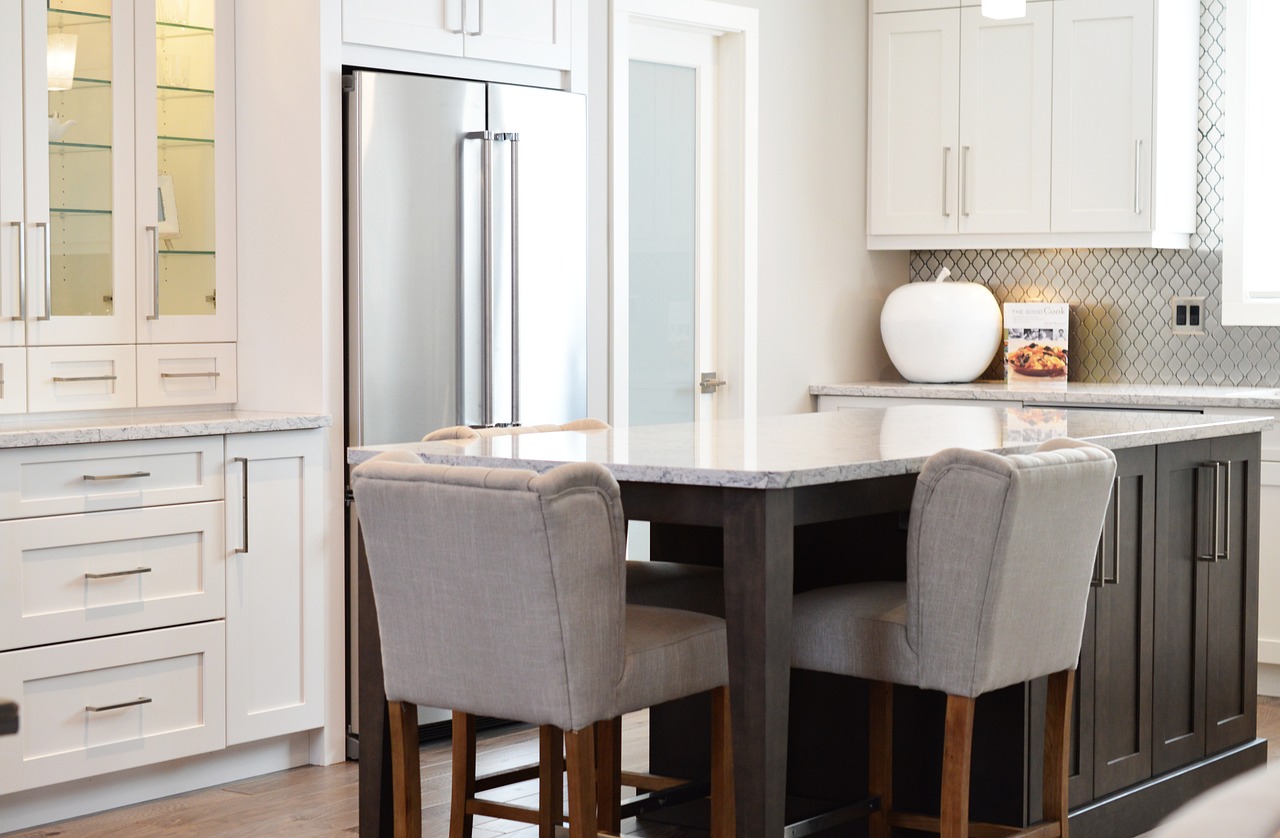
Installation Tips
Installing carbon monoxide alarms is not just a good idea; it's a necessity for ensuring the safety of your home and loved ones. To maximize their effectiveness, you need to consider a few key factors that can make all the difference. First and foremost, placement is critical. Ideally, you should install carbon monoxide alarms on every level of your home, especially near sleeping areas. Why? Because when you're in a deep sleep, the last thing you want is to be unaware of a potential danger lurking in the air.
When choosing where to install these alarms, avoid placing them too close to cooking appliances or heating systems. This is because normal emissions from these devices can trigger false alarms, leading to unnecessary panic and confusion. Instead, aim for locations that are at least 15 feet away from such sources. Additionally, ensure that the alarms are installed at least 5 feet above the floor, as carbon monoxide is slightly lighter than air and will rise. If you have a multi-story home, consider placing alarms on each floor, including the basement, to cover all potential areas where carbon monoxide could accumulate.
Another important tip is to follow the manufacturer's instructions for installation. Each model may have specific requirements or recommendations that can enhance its functionality. For example, some models may be better suited for wall mounting, while others can be placed on a shelf or table. Make sure to check whether your alarm needs to be hardwired or if it can operate on batteries. If you choose a battery-operated model, remember to replace the batteries at least once a year to ensure it remains operational.
Lastly, regular testing is essential. Once your alarms are installed, test them monthly to ensure they are functioning correctly. Most models come with a test button that you can press to check if the alarm sounds. If it doesn’t, it’s time to troubleshoot or replace the unit. Remember, a carbon monoxide alarm is only as good as its maintenance, so don’t let it become just another gadget in your home. Keep it active and alert for your safety!
- How often should I replace my carbon monoxide alarm? It's recommended to replace your carbon monoxide alarm every 5 to 7 years, depending on the manufacturer's guidelines.
- Can I install a carbon monoxide alarm myself? Yes, most carbon monoxide alarms are designed for easy installation, but always follow the manufacturer's instructions.
- What should I do if my carbon monoxide alarm goes off? Evacuate your home immediately and call emergency services. Do not re-enter the home until it has been deemed safe.
- Are there any specific locations to avoid when installing alarms? Yes, avoid placing alarms in humid areas like bathrooms or near air vents, as this can affect their performance.
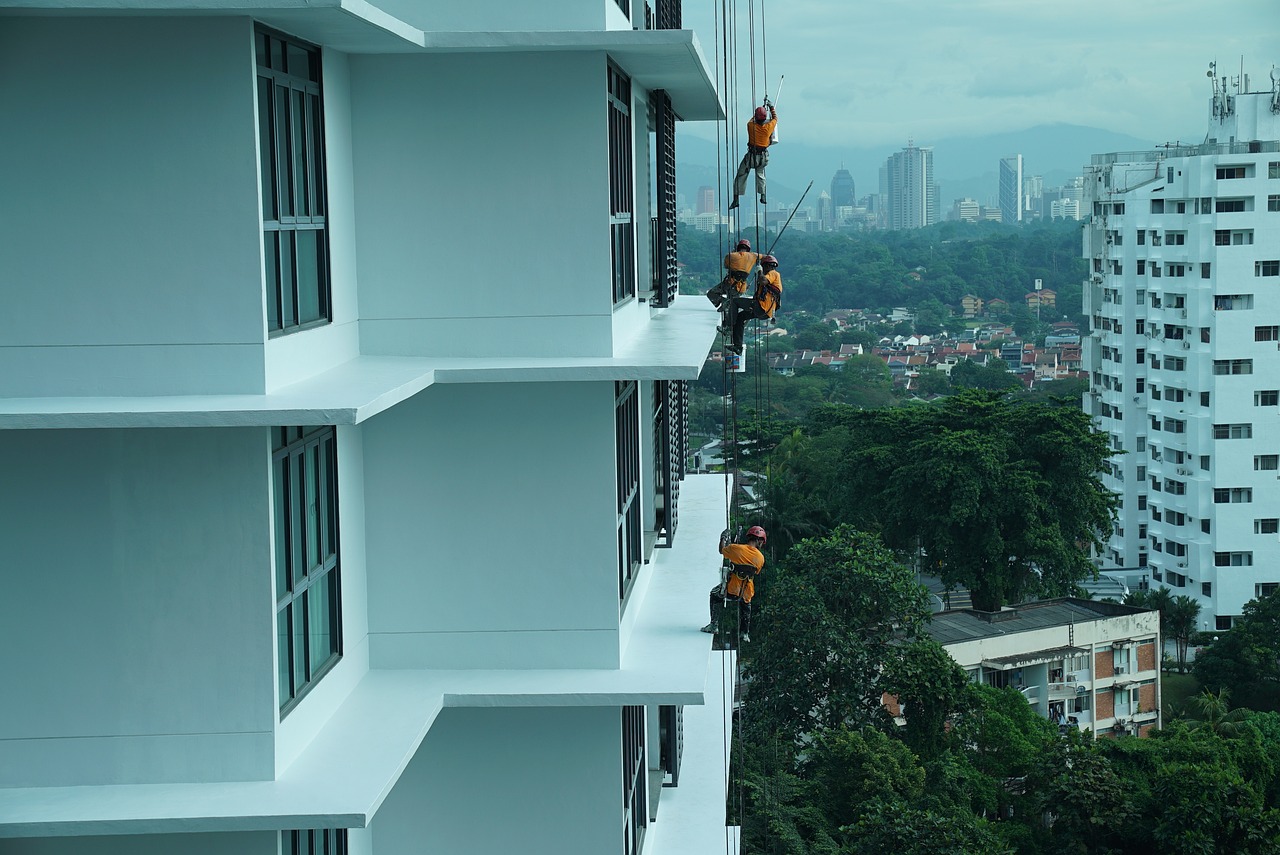
Maintenance and Testing
When it comes to ensuring the safety of your home, regular maintenance and testing of your carbon monoxide alarms cannot be overstated. Just like you wouldn’t skip changing the oil in your car, you shouldn’t overlook the upkeep of these life-saving devices. Testing your alarms is the first step in this process. You should aim to test them at least once a month. Most carbon monoxide alarms come equipped with a simple test button that allows you to check if the device is functioning correctly. If the alarm sounds, you’re good to go! If not, it’s time to replace the batteries or the entire unit if it’s not working.
But testing is just the tip of the iceberg! Maintenance involves a few more essential steps. For instance, you should replace the batteries in your alarms at least once a year, even if they seem to be functioning well. Think of it like changing the batteries in your remote control—if you wait too long, you might find yourself in the dark when you need it the most. Additionally, it’s wise to replace the entire carbon monoxide alarm every 5 to 7 years. This ensures that you have the latest technology and that your unit is still effective at detecting this dangerous gas.
Now, let’s talk about placement. The effectiveness of your carbon monoxide alarm can be significantly impacted by where it is located. Ideally, alarms should be installed on every level of your home, especially near sleeping areas. This way, if there’s a leak in the middle of the night, you’ll be alerted promptly. However, avoid placing them too close to gas appliances or in areas with high humidity, like bathrooms, as these conditions can lead to false alarms.
To make your maintenance routine even easier, consider creating a simple schedule. Here’s a quick table to help you visualize what needs to be done and when:
| Task | Frequency |
|---|---|
| Test Alarm | Monthly |
| Change Batteries | Annually |
| Replace Alarm | Every 5-7 years |
By following these maintenance tips, you not only ensure that your carbon monoxide alarms remain in top working condition but also provide peace of mind for you and your family. Remember, when it comes to safety, it’s always better to be proactive than reactive!
- How often should I test my carbon monoxide alarm? It's recommended to test your alarm at least once a month.
- When should I replace the batteries? Change the batteries at least once a year, or sooner if the alarm indicates low battery.
- How long do carbon monoxide alarms last? Most alarms should be replaced every 5 to 7 years.
- Where should I install my carbon monoxide alarm? Install alarms on every level of your home, particularly near sleeping areas.

Smoke Detector Types
When it comes to protecting your home from the devastating effects of fire, understanding the different types of smoke detectors can make a significant difference. Each type is designed to detect smoke in various ways, catering to specific needs and environments. The three main types of smoke detectors are ionization detectors, photoelectric detectors, and dual-sensor detectors. Knowing how each of these works can help you choose the best option for your home.
Ionization smoke detectors are highly sensitive to fast-flaming fires, making them ideal for areas where these types of fires are more likely to occur. They contain a small amount of radioactive material that ionizes the air, allowing for the detection of smoke particles. However, they can be prone to false alarms from cooking smoke or steam, so placing them away from kitchens is advisable.
On the other hand, photoelectric smoke detectors are better at detecting smoldering fires. They use a light beam and a sensor to identify smoke particles. When smoke enters the chamber, it scatters the light beam, triggering the alarm. These detectors are less likely to go off due to cooking mishaps, making them suitable for bedrooms and living areas.
For the ultimate peace of mind, dual-sensor smoke detectors combine both ionization and photoelectric technologies. This means they can effectively detect both fast-flaming and smoldering fires, providing comprehensive coverage. Although they may be slightly more expensive, the added safety can be well worth the investment.
When selecting a smoke detector, consider the following factors:
- Location: Where will you install the detector? Different types work better in different areas.
- Budget: How much are you willing to spend? Dual-sensor models may cost more but offer better protection.
- Maintenance: How often are you willing to check and replace batteries or the unit itself?
Ultimately, understanding these smoke detector types will empower you to make an informed decision that enhances your home’s safety. Remember, it’s not just about having a smoke detector; it’s about having the right one for your specific needs. So, take the time to assess your home and choose wisely!
Q: How often should I test my smoke detectors?
A: It's recommended to test your smoke detectors at least once a month to ensure they are functioning properly.
Q: How often should I replace my smoke detectors?
A: Smoke detectors should be replaced every 10 years, or sooner if they fail to respond during testing.
Q: Can I use a combination of smoke detector types?
A: Absolutely! Using a combination of ionization and photoelectric detectors can provide the best protection against different types of fires.
Q: Where should I install smoke detectors?
A: Install smoke detectors on every level of your home, inside each bedroom, and outside sleeping areas for maximum safety.

Home Security Systems
When it comes to protecting your home and loved ones, are your first line of defense. These systems not only deter potential intruders but also provide peace of mind, knowing that your family is safe. Imagine a fortress around your home, equipped with the latest technology to keep threats at bay. But with so many options available, how do you choose the right system for your unique needs? Let’s dive into the components, benefits, and considerations that will help you make an informed decision.
First off, a comprehensive home security system typically includes several key components that work in harmony to create a secure environment. These components often consist of:
- Alarms: These are triggered by unauthorized entry, alerting you and potentially scaring off intruders.
- Cameras: Surveillance cameras allow you to monitor your property in real-time, providing visual evidence if needed.
- Sensors: Motion detectors and door/window sensors can notify you of any unexpected movements or breaches.
Each component plays a vital role in ensuring your home remains safe. For instance, alarms serve as the loud siren that alerts not just you, but also your neighbors and law enforcement. Cameras act as the watchful eyes, capturing every moment, while sensors provide the first line of detection, ensuring that you’re aware of any suspicious activity before it escalates.
Now, let’s talk about the benefits of investing in a home security system. Not only do these systems protect against theft, but they can also reduce your homeowner's insurance premium. Many insurance companies offer discounts for homes equipped with security features. Additionally, a well-monitored system can provide immediate response from emergency services, which can be crucial in times of need. Think of it as having a safety net that’s always there, ready to catch you when you fall.
However, with numerous options on the market, choosing the right security system can feel overwhelming. It’s essential to assess your home’s unique needs. Consider factors such as:
- Size of your home
- Number of entry points
- Neighborhood crime rates
- Your budget
By evaluating these aspects, you can tailor a security system that fits perfectly with your lifestyle. For example, a larger home may require more cameras and sensors, while a smaller apartment might only need a basic alarm system. It’s all about finding that sweet spot between security and convenience.
Lastly, don’t forget to consider the technology behind modern security systems. Many systems now offer smart home integration, allowing you to control your security features from your smartphone or tablet. Imagine being able to check your cameras while you’re at work or receive alerts directly to your phone when someone approaches your door. This level of connectivity not only enhances security but also adds a layer of convenience to your daily life.
In conclusion, investing in a home security system is a proactive step towards safeguarding your home. By understanding the components, benefits, and considerations involved, you can make an informed choice that best suits your needs. Remember, it’s not just about protecting your possessions; it’s about ensuring the safety and well-being of your family.
If you still have questions about home security systems, here are some common queries that can help clarify your doubts:
- How much does a home security system cost? The cost can vary widely depending on the components and features you choose, ranging from a few hundred to several thousand dollars.
- Do I need professional installation? While some systems are DIY-friendly, professional installation can ensure that everything is set up correctly for optimal performance.
- Can I monitor my security system remotely? Yes, most modern systems allow for remote monitoring through mobile apps, giving you peace of mind wherever you are.

Components of a Security System
When it comes to safeguarding your home, understanding the is crucial. Think of a security system as your home's protective shield, composed of various elements that work together to deter intruders and alert you to potential threats. At the core of any effective security system are alarms, cameras, and sensors, each playing a unique role in creating a comprehensive safety net for your family.
First up, we have alarms. These are the loud, attention-grabbing devices that spring into action when a security breach occurs. Whether it's a break-in or an unauthorized entry, alarms are designed to alert you and your neighbors, making it less likely for an intruder to stick around. They can be triggered by various sensors, including motion detectors and door/window contacts, ensuring that every potential entry point is monitored.
Next, let’s talk about cameras. In today’s digital age, security cameras have become more sophisticated than ever. They not only allow you to monitor your property in real-time but also provide crucial evidence in case of a crime. Modern cameras come equipped with features like night vision, motion detection, and even two-way audio, allowing you to communicate with anyone on your property, whether you’re home or away. Placing cameras at strategic locations around your home can act as a significant deterrent to would-be intruders.
Then, we have sensors. These little devices are the unsung heroes of home security. They can detect motion, glass breakage, and even changes in temperature. For example, a motion sensor can alert you if someone is moving around in your yard at night, while a glass break sensor can notify you if a window has been shattered. By integrating various types of sensors, you can create a robust security network that keeps a watchful eye on your home.
In addition to these primary components, you might also consider adding smart home integration. Many modern security systems allow you to connect your alarms, cameras, and sensors with your smartphone or smart home devices. This means you can monitor your home from anywhere, receive instant alerts, and even control your system remotely. Imagine being at work and getting a notification that someone is at your front door; you can check the camera feed and communicate with them, all from your phone!
To wrap it up, the effectiveness of a security system lies in how well these components work together. It’s not just about having the latest gadgets; it’s about creating a cohesive system that fits your lifestyle and needs. When considering a security system, think about your specific requirements and how each component can enhance your home’s safety. After all, peace of mind is priceless!
- What is the best type of alarm system for my home? The best type of alarm system depends on your specific needs, such as the size of your home and your budget. Wireless systems are often easier to install, while hardwired systems can offer more reliability.
- How many cameras do I need for effective security? The number of cameras you need depends on the size of your property and the areas you want to monitor. A good rule of thumb is to cover all entry points and any blind spots.
- Are smart security systems worth it? Smart security systems can provide added convenience and control, allowing you to monitor your home from anywhere. They can also integrate with other smart home devices for enhanced functionality.
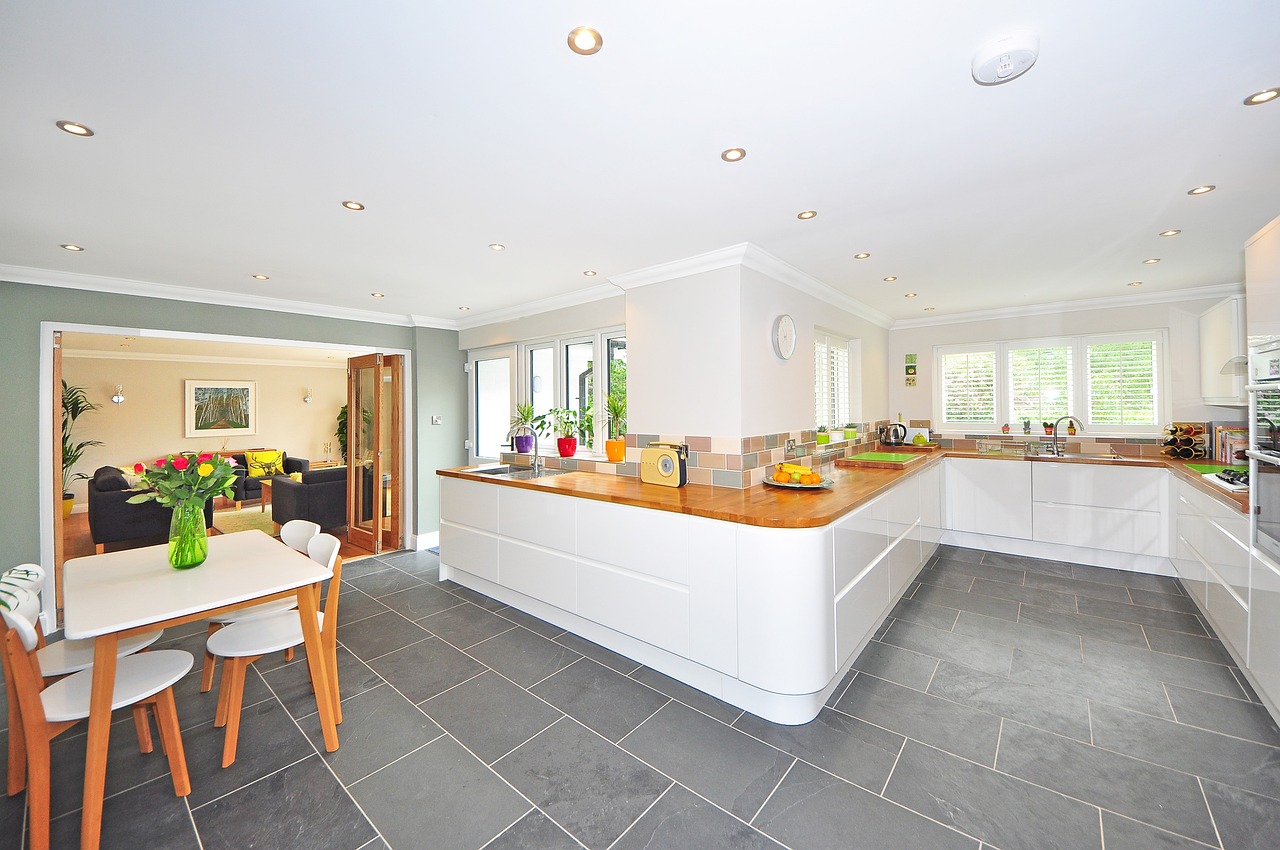
Choosing the Right Security System
Choosing the right security system for your home can feel like navigating a maze. With so many options available, it’s easy to get overwhelmed. But fear not! By breaking down your needs and understanding the features available, you can find a system that not only fits your home but also gives you the peace of mind you deserve. First, consider your home’s layout and the potential vulnerabilities. Do you have large windows, multiple entry points, or a detached garage? Each of these factors plays a crucial role in determining what type of security system will work best for you.
Next, think about the technology you want. Do you prefer a traditional system that relies on wired connections, or are you leaning towards a more modern, wireless setup? Wireless systems offer flexibility in placement and installation, while wired systems can provide a more stable connection. It's like choosing between a classic car and a sleek electric vehicle—both have their perks, but your lifestyle will dictate which one is right for you.
Another important consideration is whether you want a monitored system or a self-monitored one. Monitored systems provide 24/7 professional oversight, alerting authorities in case of an emergency. On the other hand, self-monitored systems put you in the driver's seat, allowing you to respond to alerts on your own. This decision often boils down to your personal preference and comfort level with technology.
When evaluating different systems, take a close look at the components included. Most security systems come with a combination of alarms, cameras, and sensors. Here’s a quick overview of what you might find:
| Component | Function |
|---|---|
| Alarms | Sound an alert when unauthorized entry is detected. |
| Cameras | Provide real-time video feeds and recordings to monitor your property. |
| Sensors | Detect motion and can be placed on doors and windows. |
As you weigh your options, consider your budget. Security systems can range from affordable DIY setups to high-end professionally installed systems. Think about what you’re willing to invest in your safety. Sometimes, spending a little extra can mean the difference between a basic setup and one that offers comprehensive features like smart home integration, remote access, and advanced monitoring capabilities.
Lastly, don’t forget to read reviews and seek recommendations from friends or family. Personal experiences can provide valuable insights into the reliability and effectiveness of various systems. It's like asking a friend for a restaurant recommendation—you want to know what others have experienced before making your choice.
In conclusion, selecting the right security system is about understanding your unique needs, evaluating the technology available, and considering your budget. With a little research and thought, you can find a system that not only protects your home but also gives you the confidence to enjoy your space without worry.
- What is the best type of security system for a small apartment? A wireless system with motion sensors and cameras is often ideal for smaller spaces.
- How much should I expect to spend on a home security system? Prices can vary widely, but you can find basic systems starting around $200, while comprehensive setups may cost over $1,000.
- Can I install a security system myself? Yes, many modern systems are designed for easy DIY installation, but professional installation is also available for more complex setups.
- Are monitored systems worth the cost? For many, the peace of mind and quick response from professionals make monitored systems a worthwhile investment.
Frequently Asked Questions
- What is the importance of smoke detectors in my home?
Smoke detectors are crucial for early fire detection, potentially saving lives and property. They alert you to smoke and fire, giving you precious time to escape and call for help. It's like having a vigilant guardian watching over your home, ready to sound the alarm when danger is near.
- How often should I test my smoke detectors?
It's recommended to test your smoke detectors at least once a month. This simple act ensures they are functioning properly. Think of it as a quick health check-up for your safety devices—just a few seconds can make all the difference in an emergency!
- Where should I place my carbon monoxide alarms?
Carbon monoxide alarms should be installed on every level of your home, especially near sleeping areas. This way, you can ensure that you’re alerted no matter where you are. It's like having a safety net that catches you wherever you fall in your home!
- What types of carbon monoxide alarms are available?
There are several types of carbon monoxide alarms: battery-operated, plug-in, and hardwired models. Each has its own benefits, so consider your needs and the layout of your home. Choosing the right one is like picking the perfect tool for a job—it makes all the difference!
- How do I maintain my smoke detectors and carbon monoxide alarms?
Regular maintenance is key! For smoke detectors, replace the batteries at least once a year and the unit itself every 10 years. For carbon monoxide alarms, ensure they are tested monthly and replace them every 5 to 7 years. Think of it as giving your safety devices a little TLC—they’ll thank you by keeping you safe!
- What should I consider when choosing a home security system?
When selecting a home security system, consider your specific needs, budget, and the layout of your home. Look for systems that offer comprehensive coverage and components like cameras, alarms, and sensors. It's like building a fortress—make sure every entry point is secured!
- Are home security systems worth the investment?
Absolutely! Home security systems not only protect your property but also provide peace of mind. Knowing that your home is monitored can help you feel more secure, whether you're at home or away. It's an investment in your safety, much like installing a sturdy door to keep intruders out!









